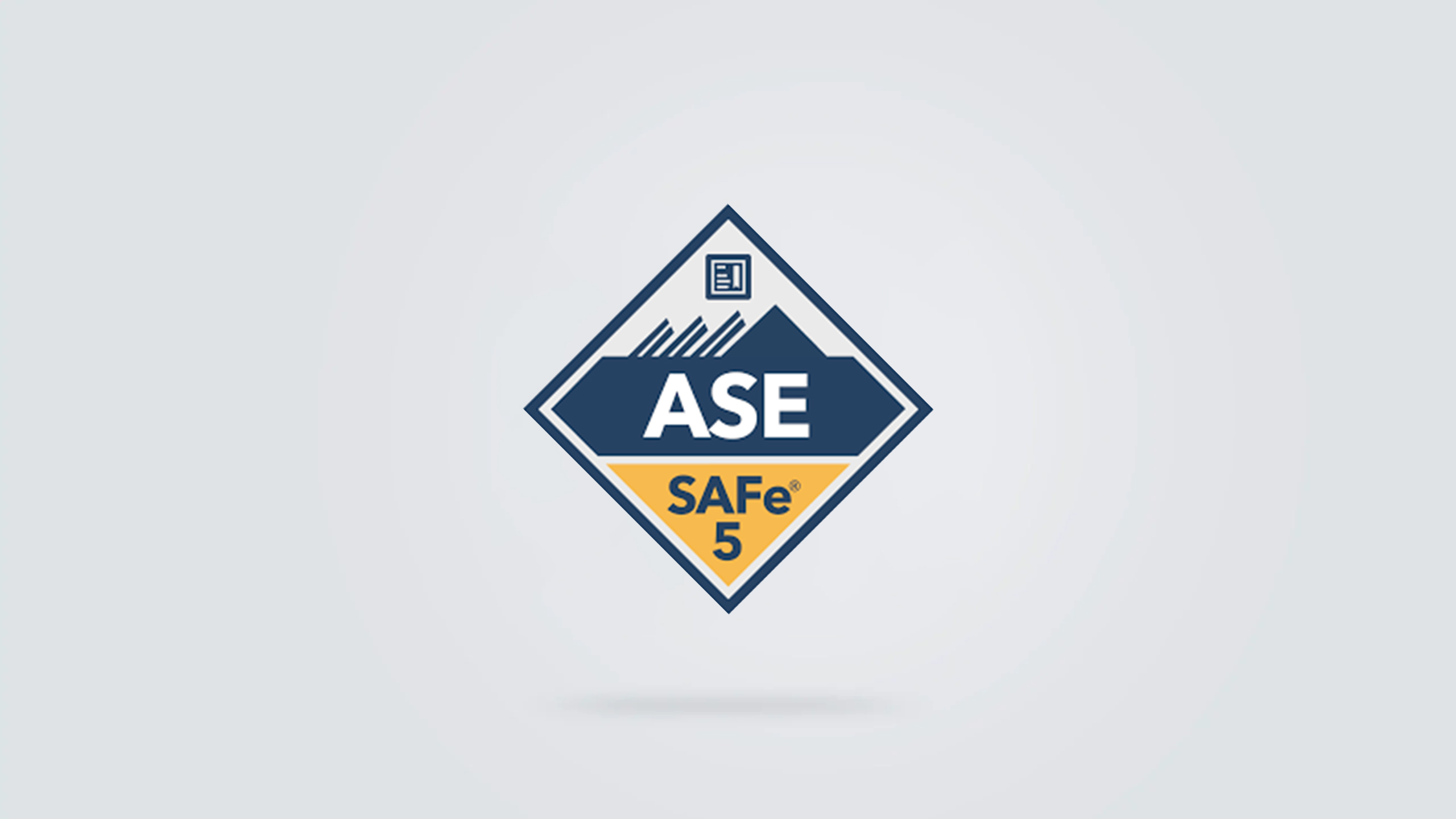Master Agile Practices With Comprehensive SAFe Qualification
In an increasingly intricate service landscape, understanding Agile practices through comprehensive SAFe certification has become an essential proficiency for specialists intending to enhance business performance. This accreditation not just provides a deep understanding of the SAFe framework yet additionally grows necessary abilities for promoting cooperation and placement amongst groups. As companies seek to navigate the obstacles of fast change, the execution of SAFe concepts offers a path to improved results. The journey to accreditation entails more than just academic knowledge; it requires a critical technique to application that can dramatically affect business agility. What does this involve?
Recognizing SAFe Framework
The SAFe (Scaled Agile Structure) structure functions as an organized approach for executing Agile practices at range across large companies. It provides an extensive approach that lines up the different degrees of an organization, from group to profile, guaranteeing that all parts function cohesively in the direction of typical objectives. SAFe integrates principles from Agile, Lean, and product growth flow, providing a well-defined set of practices, obligations, and roles.
At its core, the SAFe framework consists of 4 degrees: Team, Program, Huge Solution, and Portfolio. Each level addresses particular facets of Dexterous distribution, from taking care of small groups of programmers to looking after multiple programs and aligning critical campaigns with service objectives.
SAFe urges partnership amongst cross-functional teams, cultivating a setting where constant renovation and development are vital. SAFe Lean Portfolio Management. By emphasizing placement, transparency, and built-in high quality, the framework gears up organizations to react swiftly to market adjustments while providing worth to clients
In addition, SAFe supports different methodologies, such as Scrum and Kanban, enabling organizations to tailor their strategy according to details task demands. This flexibility ensures a robust framework for companies intending to thrive in a quickly advancing company landscape.

Advantages of SAFe Qualification
Frequently sought after in the Agile area, SAFe certification uses many advantages for specialists and organizations alike. Among the primary benefits is the enhancement of abilities and knowledge in carrying out the Scaled Agile Structure (SAFe), which furnishes individuals with the devices necessary to drive effective Agile makeovers. This accreditation indicates a dedication to expert advancement, making candidates a lot more competitive in the work market.
For companies, having actually accredited experts fosters a society of continuous improvement and collaboration, essential for adjusting to changing market demands. It makes it possible for groups to straighten their deal with strategic goals, ultimately improving performance and performance. Firms with a higher proportion of SAFe-certified staff members frequently experience reduced time-to-market and raised top quality of deliverables.
Furthermore, SAFe certification facilitates networking opportunities with other Agile specialists, allowing the exchange of finest experiences and techniques (SAFe DevOps certification). This collaborative network can substantially add to personal and business development. In recap, acquiring SAFe certification not just enhances specific abilities but likewise enhances the overall Agile maturity of a company, resulting in lasting success in today's dynamic organization setting
Secret Components of SAFe
Structure on the benefits of SAFe accreditation, understanding the key components of the Scaled Agile Structure is essential for efficiently implementing its concepts. The SAFe structure makes up four main degrees: Team, Program, Large Option, and Portfolio. Each level addresses different aspects of active methods, promoting alignment and shipment throughout the organization.
At the Group level, cross-functional groups function collaboratively making use of Dexterous approaches, such as Scrum or Kanban, to provide incremental value (SAFe Agilist). The Program degree focuses on the Agile Launch Train (ART), which is a long-lived view website team of Agile teams that plans, commits, and carries out together. The Huge Solution level addresses complex remedies that need several ARTs to operate in show, guaranteeing coordination and integration

Preparing for SAFe Accreditation
Preparing for SAFe qualification needs a tactical method to make sure a comprehensive understanding of the structure. First, acquaint yourself with the core principles and values of the Scaled Agile Framework (SAFe) Review sources supplied on the Scaled Agile internet site, consisting of the SAFe framework paperwork, study, and whitepapers, to construct a strong structure.

Furthermore, experiment example examination inquiries to familiarize on your own with the layout and kinds of inquiries you may run into. Signing up with study hall or discussion forums can promote understanding exchange and provide support from fellow prospects.
Applying SAFe in Organizations
Carrying Out the Scaled Agile Framework (SAFe) within companies requires a structured technique that straightens teams and processes toward a common goal. The successful application of SAFe begins with developing a clear understanding of its principles, consisting of alignment, collaboration, and openness. Organizations must initially evaluate their current procedures and identify areas for renovation, ensuring they are all set for the cultural change that SAFe requires.
Training and accreditation for teams assist equip members with the necessary abilities and knowledge to run efficiently within the SAFe structure. This consists of establishing Agile Launch Trains (ARTs), which offer as the backbone for supplying value across the organization.
Regular planning sessions, such as Program Increment (PI) preparation, need to be performed to focus on and integrate teams work. In addition, leveraging metrics to determine development and performance is crucial for ongoing renovation. By consistently using SAFe principles and techniques, companies can attain greater dexterity, boost collaboration, and ultimately drive much better business outcomes. Accepting this structure settings companies to respond quickly to market changes and consumer needs.
Verdict
In conclusion, grasping Dexterous practices through comprehensive SAFe qualification considerably boosts specialist capacities and adds to organizational effectiveness. my sources The knowledge acquired from recognizing the SAFe framework, along with its essential components, helps with successful changes and enhances cooperation among teams.
The SAFe straight from the source (Scaled Agile Structure) structure serves as a structured approach for carrying out Active techniques at scale throughout big companies. One of the key advantages is the enhancement of skills and understanding in applying the Scaled Agile Framework (SAFe), which furnishes individuals with the devices needed to drive successful Agile improvements. In recap, acquiring SAFe qualification not just enhances private capabilities but also enhances the overall Agile maturation of a company, leading to sustainable success in today's dynamic company atmosphere.
Building on the benefits of SAFe accreditation, understanding the key elements of the Scaled Agile Framework is crucial for efficiently executing its concepts.Implementing the Scaled Agile Structure (SAFe) within organizations necessitates an organized technique that lines up groups and procedures towards a typical objective.